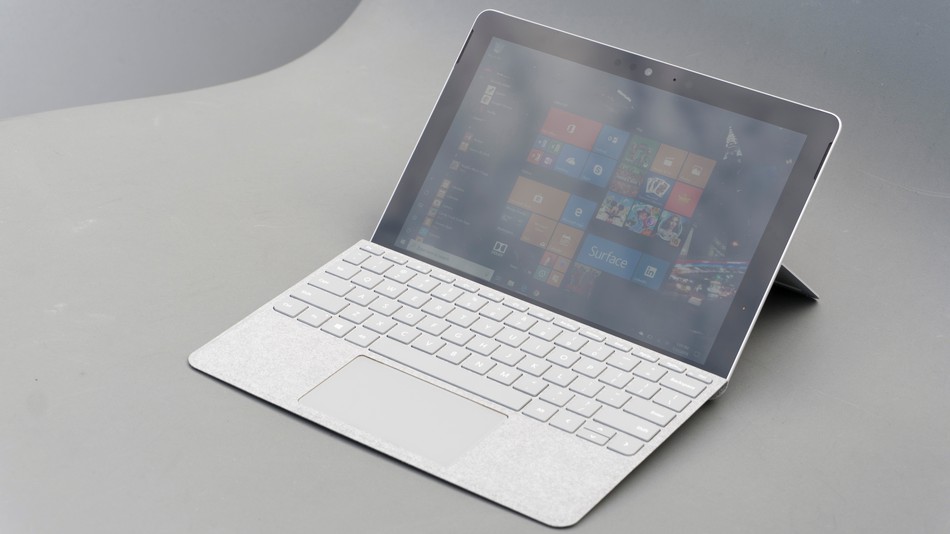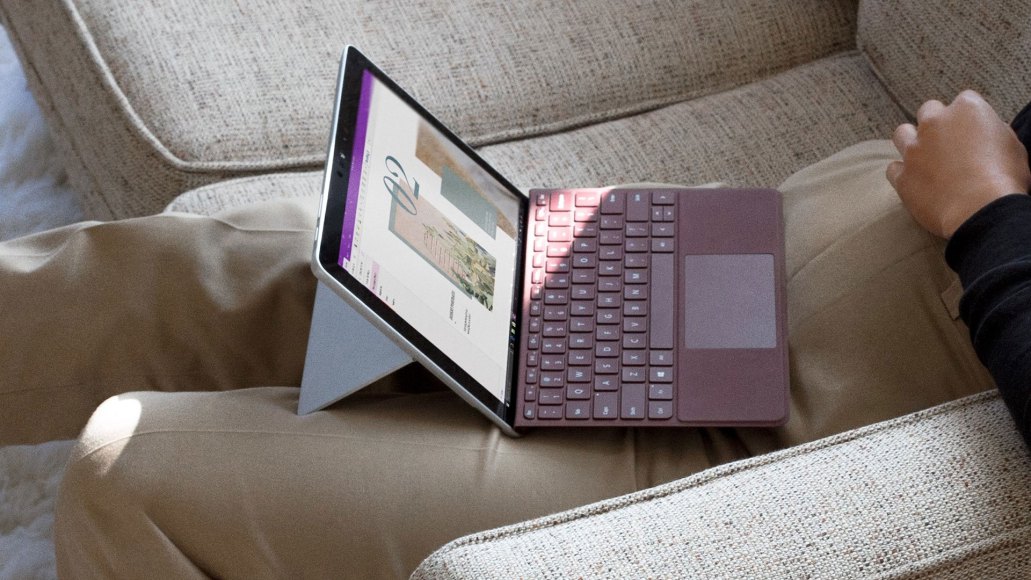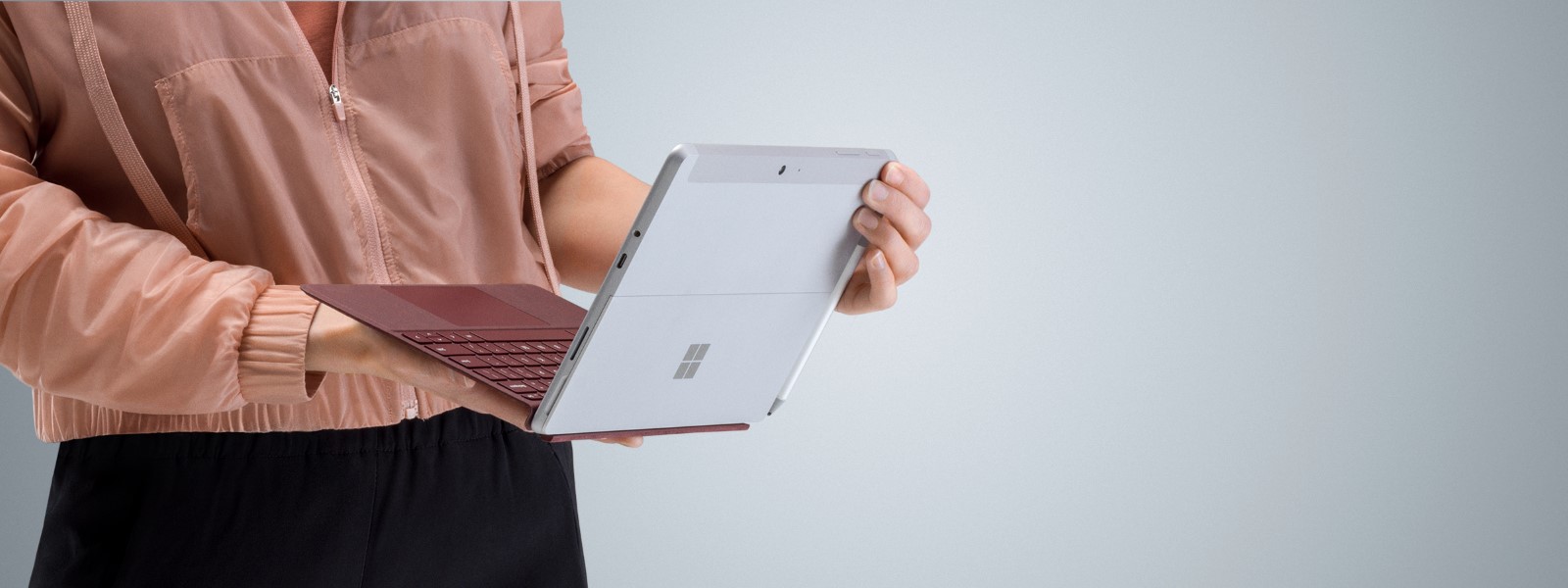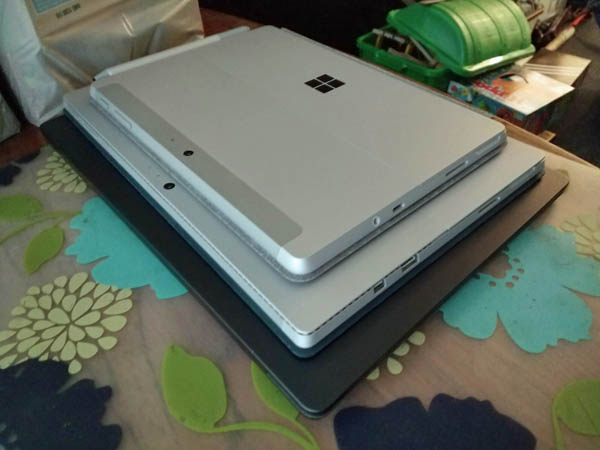The Go Standard: Microsoft Surface Go Review
 Thursday, August 30, 2018 at 2:06PM
Thursday, August 30, 2018 at 2:06PM  By Gadjo Cardenas Sevilla
By Gadjo Cardenas Sevilla
One of the most exciting product lines in technology has been Microsoft’s Surface line which came to market six years ago with a 10-inch tablet that promised full-PC functionality in a convertible tablet form-factor.
That device had a lot of good ideas, but it was too thick and heavy to be a real tablet, and the lack of lappability and a mediocre keyboard made it a poor substitute for a laptop.
Microsoft has since refined the design, improved the performance as well as the functionality attached to Surface devices. Not only have they become formidable creative tools, there’s a whole range of Surface products geared towards every type of user.
Welcome to 2018 and now Microsoft has released a 10-inch tablet that promises full-PC functionality in a convertible form factor. Sounds familiar, but the execution and positioning of the Surface Go versus the original Surface are completely different.
Surface Go is the smallest, lightest, and also cheapest Surface device. Its designed to be eminently more portable and affordable for users who have always desired a Surface but who were put off by the high cost of ownership.
It’s Go Time
 Seeing that Surface Go review units were in short supply, I went ahead and bought one as well as the requisite Surface Keyboard case from my neighbourhood Microsoft Store.
Seeing that Surface Go review units were in short supply, I went ahead and bought one as well as the requisite Surface Keyboard case from my neighbourhood Microsoft Store.
My proviso was that if the Surface Go didn’t suit my needs, I could always return it for a refund.
The first thing I realized was that the whole kit and kaboodle (boxed Surface Go and keyboard, a Surface Pen and a box with Office 365 Home) weighed next to nothing in my backpack.
Unwrapping the tablet was a delightful experience. Surface devices have always had impeccable fit and finish, and the Surface Go is no exception.
Coming from a Surface Pro 4, I appreciated the familiar yet smaller form factor and the more ergonomic rounded edges.
This device is thin but not in an anemic way that suggests it might flex or bend. It comes with a smaller charger featuring the Surface connector and it can also accept charging via the sole USB Type-C port (which also promises video-out functionality but no Thunderbolt 3 speeds). You also get a headphone jack and a microSD card slot, which I duly filled with a 256GB SanDisk card.
At 1.5 pounds, the Surface Go is incredibly light. You can hold it in one hand without any problem, it stores easily in a pouch or bag and is easily the most portable 2-in-1 Windows 10 device I’ve tried.
The Surface Keyboard Cover, a platinum Alcantara affair, is smaller in size but completely usable, especially if you’re used to Surface keyboards. My fingers found their way home quickly and I marveled at how much nicer this keyboard was to use than a recent $4700 pro laptop I recently reviewed.
The keyboard’s keys are concave, more ergonomically pleasing and catch fingers more organically. Microsoft’s design team really sweats the details and the Surface Go is full of small touches that make for a delightful experience.
When Surface Go and keyboard are merged together, you have one of the lowest profile productivity combinations out there. Firing up Word 365 to write this review, I completely lost track of everything else and just kept writing.
More than just productivity and communications, the Surface Go makes an outstanding content consumption device. The display is one of the best I’ve seen on any Surface device, and the smaller size makes it eminently more personal. There are bezels, yes, but I personally don’t mind them.
They help when you use the Surface Pen for drawing and give you a place to hold on to when you’re watching or reading on the Surface Go.
Zen machine

The Surface line of devices has always espoused a Zen ideal of simplicity mixed with purpose. The Surface Go embodies this even more because it is as capable as its larger siblings but is smaller, more portable and has an even smaller footprint.
Running a low-power Pentium Gold processor in a fanless enclosure, the Surface Go runs cool and quiet. The Surface Go comes preinstalled with Windows 10 S mode, which can only run Windows Store apps and does not allow for installing classic, centennial or win32 apps.
I figured the advantage go Windows 10 S would be improved battery life, but I quickly decided to move to Windows 10 Home, just because I already have various work apps I need to run. Making the switch if painless and quick, you don’t even need to restart the machine. One thing though, once you leave S mode, you can never return.
Powered by Pentium
The Surface Go uses a dual-core Pentium Gold processor clocked at 1.6 GHz. This may seem paltry and considering this is supposed to be less powerful than a Core i3 processor, one would think that the performance would be dampened.
On the contrary, the Surface Go is so well calibrated that it feels just as sprightly as a Surface Pro 4 from a few years ago. The advantage of a Pentium processor over a more economical ARM processor is that it can run older applications without any issue. I alternate between a PC desktop, a Surface Laptop and a Surface Pro 4 and never felt that the Surface Go was lacking in speed for most tasks. That said, I know the limitations of this device. I don’t expect to do heavy Photoshop, gaming or video editing on this device.
For the target market of front-line workers, students and professionals looking for a device that’s good for work and for play, the Surface Go will deliver, provided you temper your expectations.
While you can certainly buy a cheaper laptop with more premium specs, what Surface has always offered has been the versatility of a pen-enabled touch device as well as notebook-like functionality with the accessory keyboard.
Specs and day-to-day use

My Surface Go unit has the 128 GB of SSD storage as well as 8 GB of RAM, in terms of performance, it worked as expected. There was some wonkiness in terms of the Windows taskbar, which seemed to have a hard time adjusting to the 10-inch screen and part of it disappeared off screen. This made using the Surface Go a bit of a chore.
Battery life was also less than ideal. Microsoft is claiming 9-hours of video playback, which should translate to around 6 hours of mixed use. This was hardly the case as the Surface Go only managed to go for around 4.5 to 5 hours for me. The final straw for me was the small screen size, 10-inches is just too small for most Windows 10 apps. While yes, you can make things bigger on the screen, I quickly found that even for mail, surfing the web on Edge and Safari and even working on Microsoft Word and Excel was sub-optimal for me.
The best thing about the Surface Go for me is that it confirmed what I already knew. The Surface Pro’s 12-inch display and size is just perfect for a 2-in-1 device designed for work. I don’t disagree that many will be able to do just fine with the Surface Go, it just isn’t the answer for me, at least for most of the work I need to do. I’ll likely hold on to my Surface Pro 4 for a few more years until there’s a substantial update.
Conclusion

I really wanted to love Surface Go but a combination of janky software, middling battery life and the limitations of a small screen confirm that the Surface Go is a content consumption device first and can handle quick tasks and access services on the fly.
I can’t recommend it as a main machine, even though it is eminently portable and designed to be used on the go. I do appreciate the ideas and work that have gone into this device and think it is a great foundation for a truly portable Windows computing device.
Rating: 3.5 out of 5





















Reader Comments